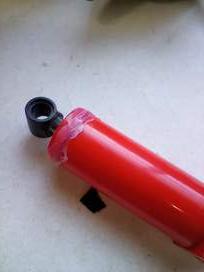The original glue was solvent based. This means that both sides of the joint are more or less fused/welded together. It is not a simple case of "2 pieces with glue in between".
Any solvent that dissolves the glue will also eat the plastic itself.
I think your best bet would be to use a very sharp scalpel or thin-bladed hobby knife to carefully score along the grove around the top until you have cut through.
That should give you a nice clear cut and (after gluing it back together) should be almost invisible.
I can't give you any good advice on what glue is best to use.
I've used acetone myself a couple of times, but found it dissolving the plastic too aggressively, which makes a precision glue-job next to impossible.
(It might be ok if used in very, very small amounts.)
Polystyrene glue (used for those plastic model-kits) will work on Lego, but doesn't have much strength. I doubt it would hold the cap in place when air-pressure is applied.





